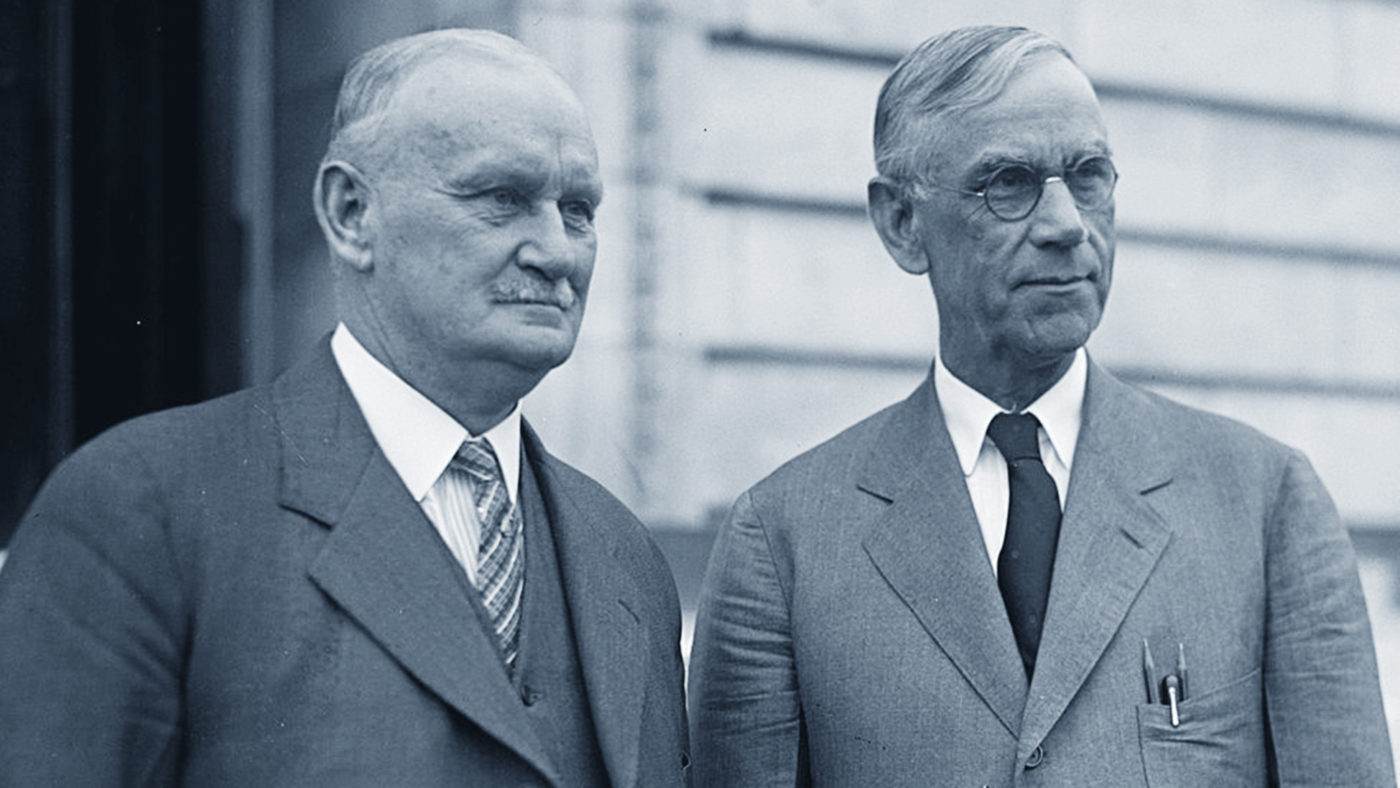On Thursday, President Donald Trump announced his plans to impose tariffs on steel and aluminium coming into the United States at 25 per cent and 10 per cent respectively. The tariff is set to go into effect in 15 days without much support from global trading partners or his own party.
The political wisdom of intervening to help an industry that produces half of what it did in the 1970s – Trump has lost one of his top aides, and there’s little to no national support for these proposed tariffs – is more than slightly questionable, while history makes clear the economic foolishness of Trump’s decision. When Trump’s predecessors have imposed tariffs, it hasn’t ended well for the US economy or the President in question.
The Smoot-Hawley Tariff Act of 1930
Arguably the most notorious piece of protectionism in US history, the Smoot-Hawley Tariff has been blamed for the Great Depression — or at least for exacerbating it. After this act was signed into law by Herbert Hoover, global trade shrank by 66 per cent in five years, and Canada was one of the countries to push back the hardest. The lesson Trump should learn from the Smoot-Hawley Tariff is that countries will retaliate – the question is just how severely.
Trump may think that “trade wars are good”, but Smoot-Hawley suggests otherwise. In the trade war that ensued after the implementation of the Smoot-Hawley Tariff, some states were hit harder than others — with midwestern states suffering the most. In the case of Trump’s tariffs, a list produced by the Tax Foundation names the states that will have the most negative impact from Trump’s proposed steel and aluminium tariff, and the top three are Texas, New York, and California. Meddling with these economic powerhouses is particularly irresponsible.
The Payne-Aldrich Tariff Act of 1909
The purpose of the Payne-Aldrich Tariff Act was actually to lower tariffs — a request President William H Taft had received from the progressives in his party. However, in its passage through the House of Representatives and the Senate, tariffs on 650 items were lowered, 220 items had higher tariffs, and over 1,100 items remained the same. Taft touted it as a successful piece of legislation, but some within his own party disagreed and split off to form their own group; both the Republicans and the new Progressive Party lost to the Democrats in 1910.
Taft had campaigned on reforming tariffs (much like Trump), and because he failed to deliver, the split that came from the Payne-Aldrich Tariff Act ruined the GOP’s standing for years afterwards. It’s already clear that the Republican Party is divided on Trump’s tariffs, and the resignation of his economic advisor Gary Cohn may only be the start. The Republicans already face a challenging set of midterms thanks to mass shootings and Trump’s poor approval rating. Yet another issue on which the President is at odds with senior figures in the party — such as the House Speaker Paul Ryan — is the last thing they need.
The “Black” Tariff of 1842
At the time of the Tariff of 1842 (which became known as the Black Tariff), the American people were extremely distrustful of the politicians who couldn’t seem to solve the problems of a fracturing union. The economy had suffered greatly in the few years before, and the tariff that President John Tyler approved didn’t help. The tariff was passed because of a deadline set 10 years earlier to lower tariffs, and instead did the opposite by raising tariff rates to almost 40 per cent — displeasing southern states and his own party members. The tariff was repealed four years later because of the negative impact it was having on the economy. The fall in trade that followed wasn’t the only negative impact of the tariff. The tariff further divided the country, since the South depended on trading cotton with the British. Thankfully, present-day America doesn’t seem to be on the path to civil war, but divisions in the country are getting deeper, a trend that is accelerating thanks to Trump. Given that his tariffs are an explicit prioritisation of one group’s economic interests over those of the rest of the country, his duties on steel and aluminium will likely make things worse.
Reagan’s foreign trade policies
Ronald Reagan was a vocal advocate for free trade. Unfortunately, his actions fell short of his words. He implemented more tariffs than any president since Hoover (who had arguably signed the worst tariff act in American history). Among dozens of tariff acts he signed — like the one that put a 100 per cent tax on Japanese automobiles — Reagan continued to proclaim he was a staunch free trader, while his actions said otherwise.
The 2002 United States steel tariff
The repercussions of this tariff are still fresh in plenty of Americans’ minds today. According to Trade Partnership, 200,000 steelworkers lost their jobs as a result of this tariff signed by George W Bush. Much like Trump, Bush imposed broad tariffs (not targeted at any particular country) and the economic consequences forced him to rescind it soon after signing it. This is the most recent example of tariff plans gone wrong, and it wouldn’t have hurt Trump to see how this impacted Bush and thousands of steelworkers in America. Just like Trump, Bush tried to send a message of strength, but in his case, he made allies and enemies alike wary.
The lesson from history, therefore, is clear. Controversial tariffs — like the ones mentioned above and Trump’s latest — are bad news, economically and politically. They can even widen divides in American society. And they’re often ditched when the government realises its mistake. Markets, left to their own devices, will lead to more balanced trade than any agreement a president can write up.


